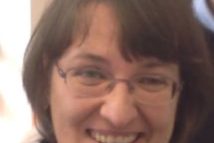Guest post by Alex Simperler, NSCCS, Imperial College London.
Intrigued by talking to Toni Collis of “Women in High Performance Computing” who are working towards equal representation in HPC, I started to question how “equal” we are in Scientific Application Software usage. The NSCCS – short for EPSRC National Service for Computational Chemistry Software – provides software, training and hardware. The training we deliver is quite unique – we aim to teach people how to use the software and how to do relevant calculations to improve/assist their experimental work. We host workshops that are conducted by our staff or third parties. I also tour the UK and the internet with customised live web-based training.
When analysing the workshops we host, I found 20-22% female participants for software that deals with condensed materials or is plane-wave based. The participants are usually full-time computational scientists and can handle a UNIX/Linux environment which is key to use this sort of software. When we host software which has a graphical user interface and which is intended to be accessible to the non-expert, we have around 30% female participants. One of our third-party workshops introduces software which is used for modelling in bio and life sciences. Here we also have around 30% women attending. I think this numbers reflect the number of women studying the corresponding STEM subjects – less women are enticed to do materials sciences, more tend do study life sciences.
However, when we offered a course on molecular excited states calculations we had 40% women attending. So how come, we managed to address this substantial female audience? It was the first time to offer a theme-based workshop which was wanted by users. The NSCCS directors happen to be experts in this field, and they are often approached to share their expertise with some of our NSCCS users. We decided there was a demand, and designed a workshop to be offered to every scientist based in UK academia in 2013. By offering a workshop people actually need, we seem to able to reach out to UK academics and establish a decent number of female participants quite naturally. However, we do not generate a new cohort of female scientific application software users this way– the women attending were practitioners already.
The NSCCS did try to invite more people to use software in their research by establishing “Applied Computational Chemistry Workshop for Synthetic Chemists” in 2012. We followed a holistic approach – make workshops and training accessible in general. We considered timing and attention spans. Thus, this course starts at 10 am and finishes at 5pm. More participants will be able to commute and not have to spend the night away from home. We have short lectures (30 min), bring in case studies, organise breaks with food and beverage, give plenty of hands-on exercises etc. – so we offer an ever changing and challenging environment. We also stick to our offer – if we state, a course is for beginners, than we really mean it. Our participants can ask us anything subject-relevant they like – it will be answered. Our aim is to create the best possible learning environment where people can actually enjoy themselves when they learn how to master the software we teach. We think this approach will be appealing to software novices of all genders. Between 2012-14 we had 30% female participants, while in 2015 we had 38%. This course is held each year and always oversubscribed. Participants tend to recommend this course to their peers, and this generates between 70 – 80% of all sign-ups.
With application software, we seem to fare better than our colleagues from HPC with respect to female practitioners. However, we feel to keep these numbers up and reach an even gender distribution, we need to address two things: (i) design courses people need for their scientific curriculum and (ii) create the best possible learning environment.
by Alexandra Simperler, NSCCS @ Imperial College London (www.nsccs.ac.uk)
Alex is working in the field of Computer Assisted Chemistry in the UK since 1999, and has more than 9 years experience in scientific software training both in industry and academia. She is a Fellow of the Higher Education Academy and works for the NSCCS at Imperial College, London.


1 Comment